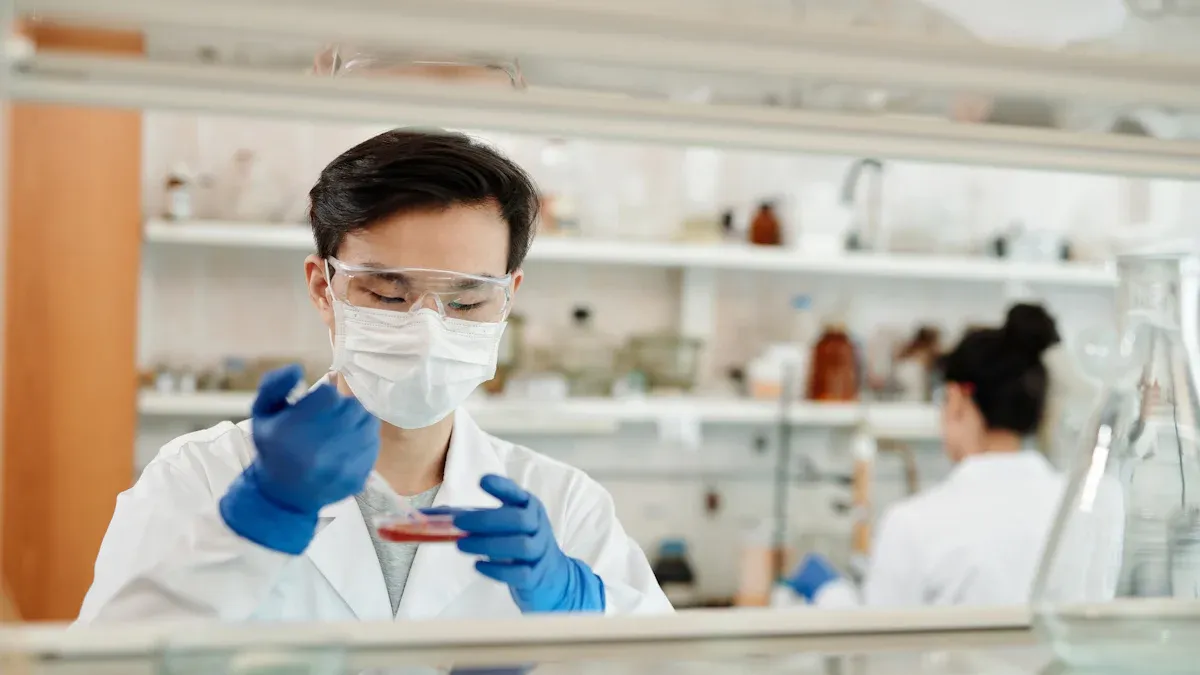XRFテクノロジーの長所と短所は何ですか?
蛍光X線 (蛍光X線分析計) technology has revolutionized how professionals test, 分析する, and verify the composition of metals, minerals, and various materials. It’s known for being fast, 非破壊的, 信頼できます, which makes it a favored solution in industries like jewelry, 冶金, electronics recycling, と品質管理. しかし, like any method, it’s not without limitations. Whether you’re a jewelry retailer, a refinery technician, or a recycling center operator, understanding both the benefits and drawbacks of XRF can help you make smarter decisions when choosing analysis equipment.

Let’s explore the core advantages and disadvantages of XRF technology — and how modern devices like those offered by Vray Instruments are engineered to maximize the benefits while minimizing the limitations.
Advantages of XRF Technology
1.非破壊検査
Perhaps the most significant benefit of XRF is that it leaves your sample intact. There’s no need to cut, 溶ける, or alter the object in any way. This is crucial for industries where preserving the original form of a product is essential — such as antique jewelry appraisal or high-purity gold trading.
2.速い, On-the-Spot Results
XRFアナライザーs can deliver elemental composition results in just seconds. This speed is particularly useful in high-volume environments like pawnshops or gold buying centers where waiting minutes per test is impractical.
3.Portability and Flexibility
Thanks to modern innovation, XRF technology is now available in both benchtop and ハンドヘルド formats. Devices like the Vray VR-H5 または VR-M5(英語) allow professionals to conduct tests in-store, at exhibitions, or even during home visits.
4.Minimal Sample Preparation
Unlike traditional wet chemistry or fire assay, XRF does not require grinding, 研磨, or dissolving the sample beforehand. Users can test solid objects, パウダー, and even coated materials with minimal pre-work.
5.Wide Element Detection Range
XRF technology can detect elements ranging from magnesium (mg) ウランへ (U), making it applicable across many industries—from detecting precious metals like gold and platinum to identifying harmful substances in RoHS compliance testing.
6.Cost-Effective in the Long Run
Once the equipment is purchased, the cost per test is extremely low. There are no ongoing reagent or disposal costs, making XRF a long-term investment with high ROI.
Limitations of XRF Technology
1.Surface-Level Analysis
XRF primarily measures the surface or near-surface layer of a material. For coated or layered objects, the result may not reflect the core material. しかし, advanced devices like the VR-T7(ブルーティーティーズ) そして VR-T9の can measure coatings and analyze through some surface barriers with greater accuracy.
2.Challenged by Low Atomic Number Elements
Elements like lithium, beryllium, or boron are difficult (or impossible) to detect using standard XRF. For applications needing ultra-light element detection, alternative methods may be required.
3.Calibration Sensitivity
XRF analyzers require proper calibration to deliver accurate results. Users need to be trained and follow procedures consistently. Fortunately, devices from VRAY come with pre-calibrated settings and user-friendly interfaces to minimize the margin of error.
4.Not Ideal for Organic Materials
XRF technology focuses on elemental analysis and isn’t suitable for testing organic compounds. This limits its use in industries like pharmaceuticals or food safety testing.
5.Radiation Safety Requirements
Although XRF emits low levels of radiation, safety protocols must be followed. VRAY Instruments integrates automatic shielding and shut-off features into models like VR-X5の そして VR-T6の to ensure safe usage in public or retail environments.
Why Choose VRAY Instruments for XRF Testing?

At Vray Instruments, we’ve spent years perfecting XRF analyzers tailored to the needs of real users in the jewelry, precious metal, リサイクル産業. Our lineup offers both portable and benchtop options with advanced features that address the key pain points users often face.
Recommended Models Based on Your Needs:
- For Jewelers and Pawnshops:
VR-X3の そして VR-X5の offer reliable, easy-to-use platforms with integrated PCs and touchscreens — perfect for storefront environments.
- For On-the-Go Professionals:
VR-M5(英語) そして VR-H5 are compact, 軽量, and battery-powered — ideal for field analysis or home service visits.
- For High-Purity Gold Analysis:
VR-T9の features ultra-low detection limits (±0.001%), スペクトル比較, and a spacious chamber to test irregular shapes or thick samples.
- For Laboratories and Mass Testing:
VR-T6の, VR-T7(ブルーティーティーズ), そして VR-S6 come with advanced Multi-FP software, high-precision platforms, and customizable reporting, making them suitable for large-scale quality control environments.
Each model is designed to help professionals overcome the typical limitations of XRF while maximizing speed, 安全性, と精度. Whether you’re testing a gold bracelet or evaluating 99999-grade bullion, VRAY’s instruments are engineered to support your success.
User-Centered Recommendations
- Accuracy vs. Mobility: If you’re trading a bit of portability for top-tier accuracy, opt for a benchtop model like VR‑T9.
- Budget-Conscious but Quality-Driven: VR-N3型 provides a cost-effective entry point with essential features and stable performance.
- Volume Testing: Choose a model with high-speed processing like VR-S6, especially if you’re handling hundreds of tests per day.
We also provide lifetime technical support and offer flexible customization based on your business workflow.
よくある質問
Q1:Can XRF analyzers detect gold plating or only solid gold?
a1:はい. High-end models like the VR-T5(バーチャル ティー ティーファイブ) and VR-T6 can detect both gold plating and solid gold. しかし, since XRF is surface-sensitive, it’s crucial to use models with coating analysis capabilities.
Q2:How accurate are VRAY’s XRF machines compared to fire assay?
A2:While fire assay is still the benchmark for ultimate accuracy, VRAY XRF analyzers offer ±0.001% precision in high-end models like the VR-T9, which is more than sufficient for most commercial applications.
Q3:Is it safe to use XRF machines in a retail store?
A3:絶対に. VRAY machines come with built-in safety mechanisms such as automatic shielding, radiation interlocks, and certification compliance to ensure operator and customer safety.
Q4:Can I use the same machine to test gold, 銀, とプラチナ?
A3:はい. All VRAY models support multi-element detection, making them suitable for gold, 銀, 白金, パラジウム, ロジウム, and other PMG metals.
Q5:Do I need technical training to operate a VRAY analyzer?
A5:Minimal training is needed. Most VRAY devices feature intuitive touchscreens, smart calibration, and pre-set testing modes. We also offer customer onboarding and technical support.

ワッツアップ
QRコードをスキャンして、WhatsAppチャットを開始してください.